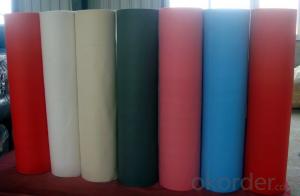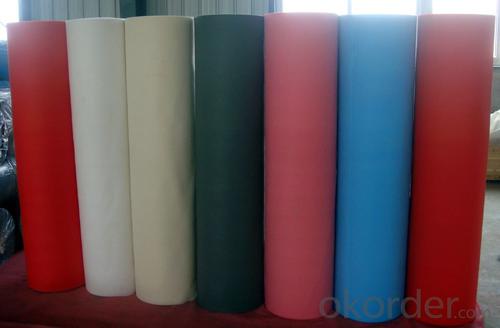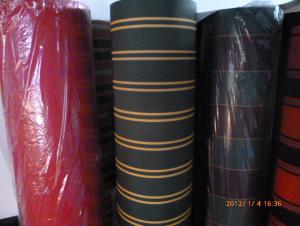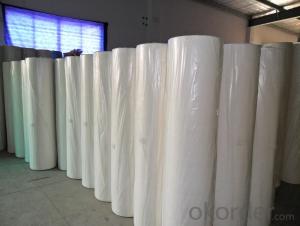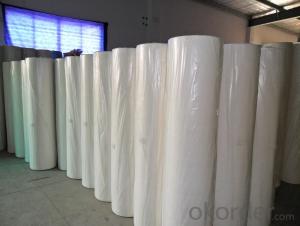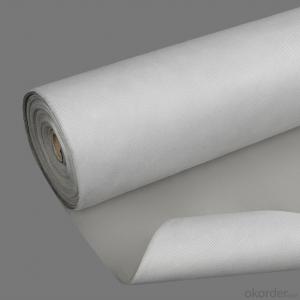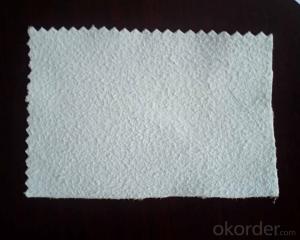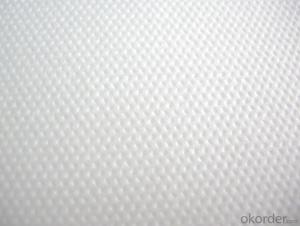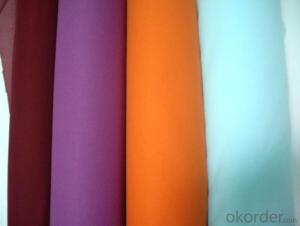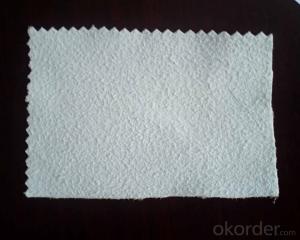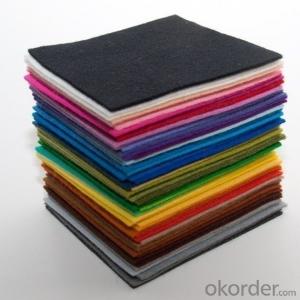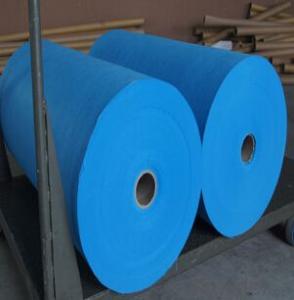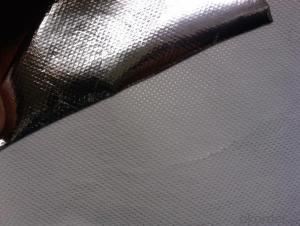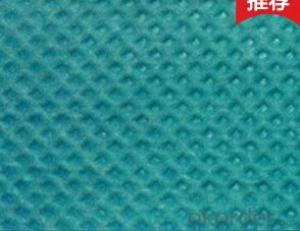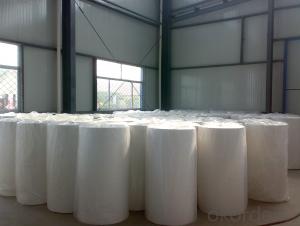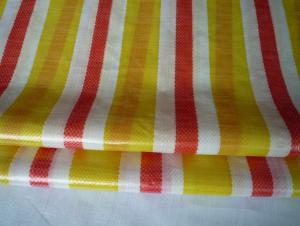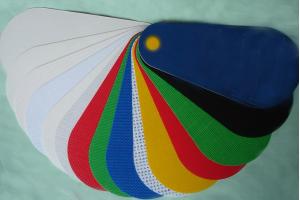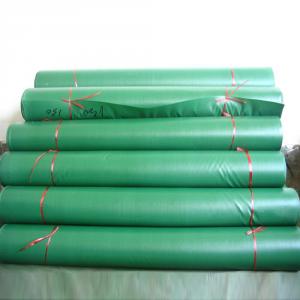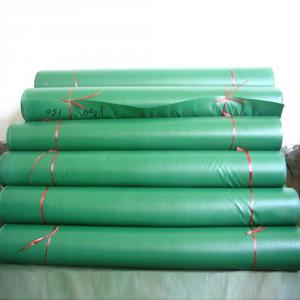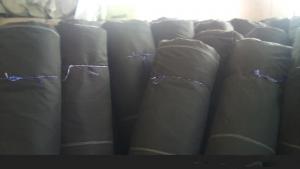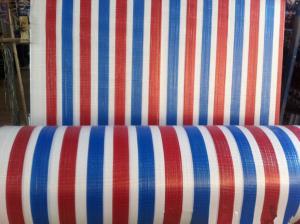2015 china wholesale felt,non woven fabric,non-woven
- Loading Port:
- Shanghai
- Payment Terms:
- TT OR LC
- Min Order Qty:
- 1000 roll
- Supply Capability:
- 10000 roll/month
OKorder Service Pledge
OKorder Financial Service
You Might Also Like
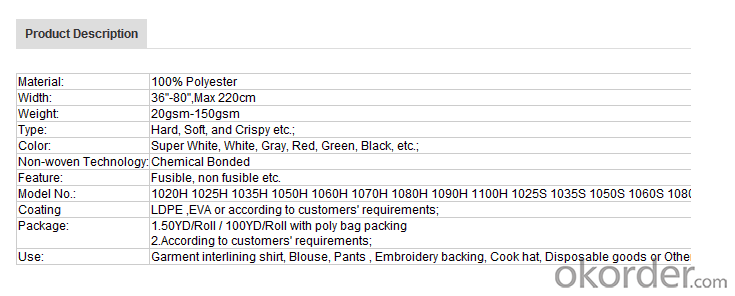 PP non woven weed control mat is made of environmentally friendly raw materials, pp spunbond nonwoven fabric. It used to prevent the growth of weed, without the use of potentially dangerous chemical sprays or labor intensive hoeing. Once installed, weed mat will continue providing protection for years without maintenance.
PP non woven weed control mat is made of environmentally friendly raw materials, pp spunbond nonwoven fabric. It used to prevent the growth of weed, without the use of potentially dangerous chemical sprays or labor intensive hoeing. Once installed, weed mat will continue providing protection for years without maintenance.
They are permeable fabrics, which allow air, water and nutrients to pass through, and designed to block out the sun to reduce photosynthesis and stop weed growth.

The use of landscaping fabrics has become extremely popular in recent years for many reasons:
1. Leisure time is maximised - the need for weeding and on-going maintenance is minimised
2. Environmentally friendly - no need for chemical based weed killers
3. Promotes healthier plants - it allows the soil to breath and water to permeate
We offer different types of weed control fabrics to suit all applications and budgets.
1. Available in a range of sizes & materials to suit various applications from small to large landscaping projects, in both commercial and domestic situations.
2. All our landscape fabrics are UV stabilised
3. Ideal for use under paths, patios, decking, paving, bark mulch, gravel etc.
FEATURES:
1. Weed suppressant and drainage control landscaping fabric
2. Spun bonded non-woven fabric – will not fray when cut
3. Easy to use
4. Environmentally friendly
5. Allows water, air and nutrients through, suppressing weeds without the use of chemicals
6. Good alternative to Plantex® where cost is a factor
7. UV Stabilised
8. Reduces the level of watering required due to the slower rate of water evaporation
FUNCTION:
1. Cover crops in the ground surface,prevent weeds and against the insect
2. Controlling soil humidity and the temperature
3. Does not affect the growth of the crops
4. Protects plants from harmfully solar radiation
5. Air permeability, water permeability help crops growth.
6. Mothproof, eco-friendly, breathable, anti-bacteria, tear-resistant, fusible
APPLICATIONS:
1. Weed block for landscaped garden beds
2. Permeable liners for planters (stops soil erosion)
3. Weed control under wooden decking
4. Geotextile for separating aggregate / soils under walkway blocks or bricks
5. Assists in preventing paving from settling unevenly
6. Landscape fabric prevents soil erosion
Health - Hygiene & Medical
Surgical Gowns
Gloves
Face Masks
Foot covers
Diapers
Caps
Bedsheets
Curtains
Pillow Covers
Slippers
Packaging
Sleeping Bags
Tarpaulins
Tents
Artificial Leather
Bags for Rice/Sugar etc.
Luggage
Vacuum Cleaner Bags
Tea and Coffee Bags
Buff Pads
Shopping Bags
Agriculture
Crop Covers
Turf Protections
Nursery Over wintering
Weed Control Fabrics
Root Bags
Containers
Capillary Matting
Other types of covers
Furniture Upholstery
Roofing and Tile Underlayment
Acoustical Ceilings
Insulation
House wrap
Pipe wrap
Sofa and Mattress Lining
Shoes & Garments
Coveralls
Pillow cases
Airline Headrests
Interlinings
Clothing and Glove insulation
Bra and Shoulder Padding
ADVANTAGES:
1. Lower labour costs as no weeding maintenance for years;
2. Water seeps through and can conserve soil moisture for improved growing conditions;
3. Air escapes – humidity rises through the mat for a more controlled growing environment;
4. Increase crop yields close to 25% due to improved growing conditions and absence of water stress and competition of nutrients absorption from weeds;
5. Minimises bacteria and fungus problems especially Algae;
6. Strong, woven construction or pressed fibre sheet resists tears and punctures;
7. Resistant to mildew, rot, water, sunlight and most of the agricultural chemicals
8. Fertilizer is applied on the mat, thus helping the owner or estate manager to monitor the progress of manuring;
9. Prevents soil erosion or leaching of soil nutrients or fertilizers applied;
10. Environmental friendly.
- Q: Listed in recent years the textile industry pollutant emissions
- From the first half of this year and the third quarter of China's major pollutant emissions, industrial wastewater emissions of 120.4 billion tons, an increase of 2.4%; COD emissions of 6.896 million tons, an increase of 3.7%; sulfur dioxide Emissions of 12.746 million tons, an increase of 4.2%.
- Q: The weight of the textile fabric
- Fabric cost = raw material cost + weaving costs + dyeing after finishing processing fees + test volume packaging costs + tax + loss of all links
- Q: What are the common textile auxiliaries?
- Shorten the processing cycle or reduce the processing process, save processing time, improve processing efficiency. Reduce energy consumption, save energy and reduce costs
- Q: Differences between textile mills and garment factories
- After the carding, and lines, twisting, roving, spun yarn, winding, warping, weft, weaving, finishing and other long process made of gray cloth, and then sent to the printing and dyeing plant dyeing and finishing,
- Q: Sponges are plastic or textiles
- As well as shock-resistant, anti-friction applications such as elastic materials, such as soles, tractor tanks. Sponge production process is as follows
- Q: What is a textile fabric?
- Gray cloth of the British fabric is woven after the printing and dyeing has not been processed cloth, has not done pre-treatment, dyeing / printing, finishing cloth. Industrial gray cloth again refers to the fabric or fabric
- Q: What are the classification of the textile?
- Cotton spinning silk processing linen wool chemical fiber can also be divided according to the weaving method: knitted woven nonwoven
- Q: "Textile color standard system"
- The dye molecules and heavy metal ions are likely to be absorbed by the skin and endanger the health of human skin, on the other hand will affect the other clothing worn on the body was stained, or with other clothes when washing dirty other clothing The
- Q: Today, the national textile market prospects
- In the industrial restructuring, change the driving force behind the growth mode, in the industrial restructuring and revitalization planning and a series of national policy support, China's textile industry successfully resisted the impact of the international financial crisis, production and sales continued to grow
- Q: What is the use of polyurethane TPU hot melt adhesives in textiles?
- To tie on behalf of sewing can greatly reduce the labor intensity of clothing, and the production of fine clothing, fit, strong and solid. Hot melt adhesives used for fabric paste mainly polyamide, polyurethanes and polyurethane and the like.
Send your message to us
2015 china wholesale felt,non woven fabric,non-woven
- Loading Port:
- Shanghai
- Payment Terms:
- TT OR LC
- Min Order Qty:
- 1000 roll
- Supply Capability:
- 10000 roll/month
OKorder Service Pledge
OKorder Financial Service
Similar products
Hot products
Hot Searches
Related keywords
